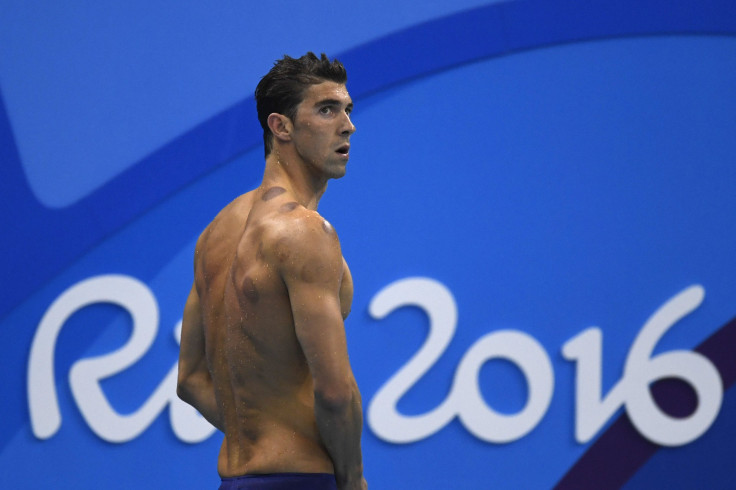Michael Phelps' Cupping Method: Russian State TV Likens Ancient Healing Method To Doping

Russian state television has reportedly likened United States swimmer Michael Phelps’ now-famous cupping method to meldonium — a banned performance drug that resulted in suspensions of many Russian athletes on accounts of doping, increasing tensions between the two countries.
A number of athletes at the Rio de Janeiro Olympics have been spotted sporting circular bruises on their bodies, an after effect of an ancient Chinese healing method that reportedly improves circulation to heal muscles and remove swelling. In the past, stars like Jennifer Aniston, Gwyneth Paltrow, Victoria Beckham and Justin Beiber have been photographed with these bruises.
Following Phelps’ 19th Olympic gold medal in the 4x100m freestyle relay, the anchor of a Russian show explained cupping to viewers by saying: “Following the Hollywood trend, the method was adapted by athletes. According to them, vacuum-based massage improves circulation and overall well being, suggesting that muscle repair happens faster after physical exertion.”
“In other words, the net effect from such practices in many ways, is not unlike those of meldonium,” he added in Russian, drawing comparisons with the athletes who were disqualified or stripped of medals following the use of the drug.
Meldonium is a drug available over the counter in Russia — used to treat patients who suffer from a lack of blood flow to the body. Not available in the U.S., the World Anti-Doping Agency put meldonium on its banned substances list in January after finding “evidence of its use by athletes with the intention of enhancing performance.”
In April, Russian President Vladimir Putin said: “This substance was never considered as doping. It doesn’t influence the result. That’s totally certain. It just keeps the heart muscles in good condition under high load.”
Russia is facing a difficult time at the Olympics this year with 118 of its 389 competitors banned after state-sponsored doping. All its athletes have also been banned from the Paralympics. Those who have made it, like swimmer Yulia Efimova, were booed by the audience.
Cupping is a form of acupuncture done by lighting flammable liquid in a glass cup. After the flame goes out, the cups stick to the body because of the suction created by the drop in temperature. The suction pulls the skin away from the body, promoting blood flow, which leaves the infamous red spots, lasting for three or four days.
Cupping is not a proven medical treatment and there is a dearth of scientific studies into its effects.
Even though there are a number of recovery techniques at the disposal of the athletes, U.S. gymnast Alex Naddour told USA Today that cupping was “better than any money I’ve spent on anything else.”
“That’s been the secret that I have had through this year that keeps me healthy,” Naddour added, saying the process saved him from pain.
© Copyright IBTimes 2024. All rights reserved.












